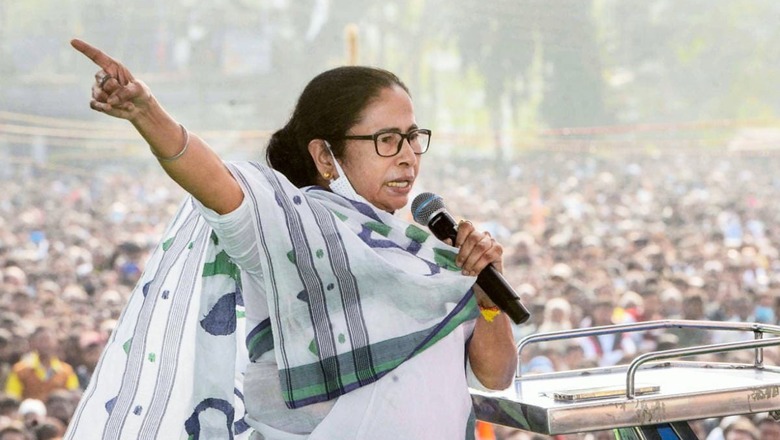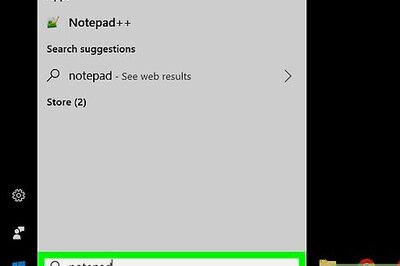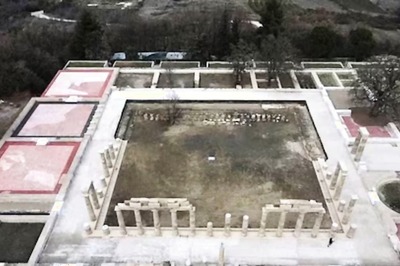
views
In the do-or-die Bengal polls, an epic battle like the India-Australia Eden Garden Test of 2001, Mamata Banerjee, the only woman chief minister in India now, had to fight single-handedly against all odds to secure her citadel. Didi did it on her own and without any partnership. And that too from a wheelchair. In fact, she added two more seats to her 2016 tally. In her press conference soon after winning her third term she said, “If you remember when I was told about a double engine government, I had said I will score a double century.”
Didi did score a double ton, like VVS Laxman had in 2001 to beat the formidable Aussies. To use an oxymoron, it was truly a bittersweet victory as she narrowly lost in Nandigram.
West Bengal had turned into a political ground zero after the BJP’s stunning performance in the 2019 parliamentary polls, where it had won 18 seats. Seeking “asol poriborton” or real change, an enthused cadre launched the party’s fiercest campaign yet. The BJP in its desperation to win the ideologically important state left no stone unturned. The central leaders rushed to Bengal to provide the state unit the much-needed push, creating a massive buzz. The party reached out to the marginalised Matuas, Rajbanshis, tea garden workers, Dalits and tribals. It was a prestige battle that the BJP wanted to win at any cost.
But Didi is not the one to give up so easily: the giant killer who as a Youth Congress leader rose to prominence by beating the Left stalwart Somnath Chatterjee in Jadavpur in 1985. Not known to shy away from taking challenges, Mamata chose to fight from Nandigram when she could have easily won from the safe Bhawanipur. Many saw that as her weakness, but she knew what she was doing, even though she lost there.
Didi, on a mission, criss-crossed the state in a wheelchair and put up a spirited fight. In the process, the charges of cut-money culture, institutionalised corruption, politics of intimidation, the Bhaipo (nephew) factor all got buried much like the 2016 elections where Mamata had won comfortably despite the Saradha scam and the Narada sting.
The BJP provided an opportunity to her by fielding over five dozen TMC turncoats who had joined the party in the past six months. This not only alienated its own grassroots workers but also confused the voters. More than the caste combination, the BJP’s overdependence on TMC turncoats cost the party dearly. A BJP leader said it’s the major reason why it lost the election. “People got confused, they wanted to vote for BJP, not the TMC turncoats,” she said. The rebellion in the state BJP ranks post ticket distribution boosted the TMC’s chances. The turncoats made no impact.
Also, the BJP’s plan to win over the Hindu majority fizzled out. While it had hoped that Mamata’s blatant appeasement of the Muslim minority will consolidate the Hindu votes in its favour, the TMC knew it will romp home with the support of a majority of the minority votes and minority of majority votes. The BJP leader said, “While Muslims voted for the TMC en bloc, Hindus remained relatively neutral.” Aware that the issue of minority appeasement could dent her poll prospects, Didi had tried a course correction by providing Rs 180 crore in aid to Durga Puja pandals during last year’s lockdown.
While the second wave of Covid wreaked havoc in national capital Delhi, Prime Minister Modi had to take a break from campaigning. The blitzkrieg campaign came to a grinding halt. Hundred-plus seats in the last three phases in Kolkata, Murshidabad, Malda and Burdwan went to polls without Modi campaigning, which worked to Didi’s advantage. The BJP’s inability to name a CM candidate against the mercurial Mamata was also a huge factor that worked for the TMC. The state BJP leaders were simply no match for her charisma.
The result clearly shows Mamata was largely unaffected by any anti-incumbency. While she continued to be very popular among voters, Mamata feared the local anti-incumbency against the TMC leaders may spoil the party, especially after allegations of cyclone Amphan relief money loot surfaced a year before the assembly elections. She swiftly moved to do damage control by dumping a number of TMC leaders. Also what worked in Trinamool’s favour was the simmering discontent against the BJP MPs who allegedly simply did not perform after winning in 2019. The advantage was lost.
“Jai Shri Ram” chants worked for the BJP to the extent of making it the principal opposition party in Bengal but its shrill campaign failed to oust Mamata. The eastern frontiers remain unconquered for the saffron party.
Without a doubt, it was the toughest battle of Didi’s political career and the victory makes her the tallest leader from Bengal after Jyoti Basu.
It’s too early to say how this victory will reverberate at the national level. To be sure, it will galvanise the opposition before the 2024 general elections. But there are too many ifs and buts. The Congress, the fulcrum of any opposition alliance, has shrunk further and the regional leaders have a tendency to pull in different directions. Plus, for people who vote differently in general elections, Modi remains a superhero. We don’t know yet if voter priorities and preferences will change in post-Covid India. We also don’t know if voters will hold people in power accountable for the collapse of the healthcare system.
But for now, with Didi’s double ton and a hat-trick, it’s game over in Bengal.
Read all the Latest News, Breaking News and Coronavirus News here. Follow us on Facebook, Twitter and Telegram.




















Comments
0 comment